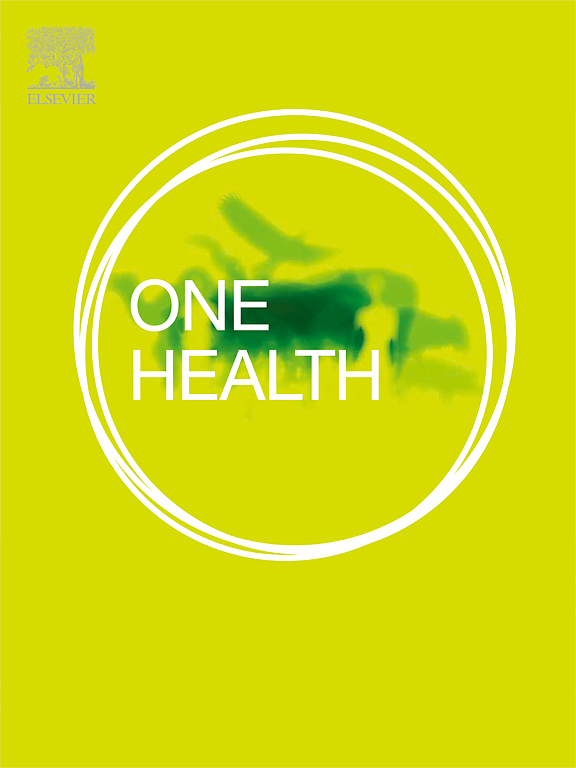The opportunities for and barriers to antimicrobial resistance surveillance by lot quality assurance sampling in livestock: Findings from interviews with stakeholders in Germany
IF 4.1
2区 医学
Q1 INFECTIOUS DISEASES
引用次数: 0
Abstract
Introduction
Bacterial pathogens exhibiting antimicrobial resistance (AMR) are a health threat for humans, companion animals and livestock. Surveillance underpins appropriate AMR responses, but can be biased or expensive. Surveillance using Lot Quality Assurance Sampling (LQAS) has shown promise in human health settings; more evidence on its applicability and acceptability in livestock populations is needed. Drawing on in-depth interviews, this article examines stakeholder perspectives on LQAS for AMR surveillance in livestock in Germany.
Methods
Twenty-five stakeholders were interviewed. They included employees of German universities, research institutes, Federal animal health services / veterinary laboratories, animal producer associations, and veterinarians. Detailed notes of online interviews were analyzed using a framework approach.
Results
Respondents were concerned about AMR in livestock and also about restrictions on antibiotic treatment options. They described the multifaceted, legally prescribed data gathering for farmers to monitor antibiotic consumption and the widespread use of antibiograms to guide treatment in Germany. Respondents saw potential benefits of LQAS for AMR surveillance, in terms of reducing the sample sizes and the need for antibiotic susceptibility tests, but there were questions about surveilling commensal bacteria, with concerns about it leading to further restrictions on antibiotic consumption and driving food production overseas.
Conclusion
An LQAS approach to AMR surveillance requires locally responsive guidance to alleviate concerns about further restriction of treatment options (and about animal welfare). Given existing data collection, recording and reporting burden for farmers and veterinarians, early engagement is needed to agree the rationale and benefits of LQAS, particularly if surveilling resistance in commensal bacteria is considered.
家畜批次质量保证抽样进行抗菌素耐药性监测的机会和障碍:来自德国利益相关者访谈的结果
具有抗菌素耐药性(AMR)的细菌性病原体对人类、伴侣动物和牲畜的健康构成威胁。监测是适当的抗菌素耐药性反应的基础,但可能存在偏见或代价高昂。使用批次质量保证抽样(LQAS)的监测在人类健康环境中显示出前景;需要更多的证据来证明其在牲畜种群中的适用性和可接受性。通过深入访谈,本文探讨了利益相关者对德国牲畜抗菌素耐药性监测的LQAS的看法。方法对25名利益相关者进行访谈。他们包括德国大学、研究机构、联邦动物卫生服务/兽医实验室、动物生产者协会和兽医的雇员。使用框架方法分析在线访谈的详细记录。结果受访者对牲畜的抗生素耐药性以及抗生素治疗选择的限制表示担忧。他们描述了多方面的、法律规定的数据收集,以便农民监测抗生素的使用,以及在德国广泛使用抗生素图来指导治疗。受访者认为,就减少样本量和抗生素敏感性测试的需要而言,LQAS对抗生素耐药性监测有潜在的好处,但在监测共生菌方面存在问题,人们担心这会导致对抗生素消费的进一步限制,并推动食品生产向海外发展。结论采用LQAS方法进行抗菌素耐药性监测需要针对当地情况的指导,以减轻对进一步限制治疗选择(以及动物福利)的担忧。鉴于农民和兽医现有的数据收集、记录和报告负担,需要尽早参与,以就LQAS的基本原理和益处达成一致,特别是在考虑监测共生细菌耐药性的情况下。
本文章由计算机程序翻译,如有差异,请以英文原文为准。
求助全文
约1分钟内获得全文
求助全文
来源期刊

One Health
Medicine-Infectious Diseases
CiteScore
8.10
自引率
4.00%
发文量
95
审稿时长
18 weeks
期刊介绍:
One Health - a Gold Open Access journal.
The mission of One Health is to provide a platform for rapid communication of high quality scientific knowledge on inter- and intra-species pathogen transmission, bringing together leading experts in virology, bacteriology, parasitology, mycology, vectors and vector-borne diseases, tropical health, veterinary sciences, pathology, immunology, food safety, mathematical modelling, epidemiology, public health research and emergency preparedness. As a Gold Open Access journal, a fee is payable on acceptance of the paper. Please see the Guide for Authors for more information.
Submissions to the following categories are welcome:
Virology,
Bacteriology,
Parasitology,
Mycology,
Vectors and vector-borne diseases,
Co-infections and co-morbidities,
Disease spatial surveillance,
Modelling,
Tropical Health,
Discovery,
Ecosystem Health,
Public Health.
 求助内容:
求助内容: 应助结果提醒方式:
应助结果提醒方式:


